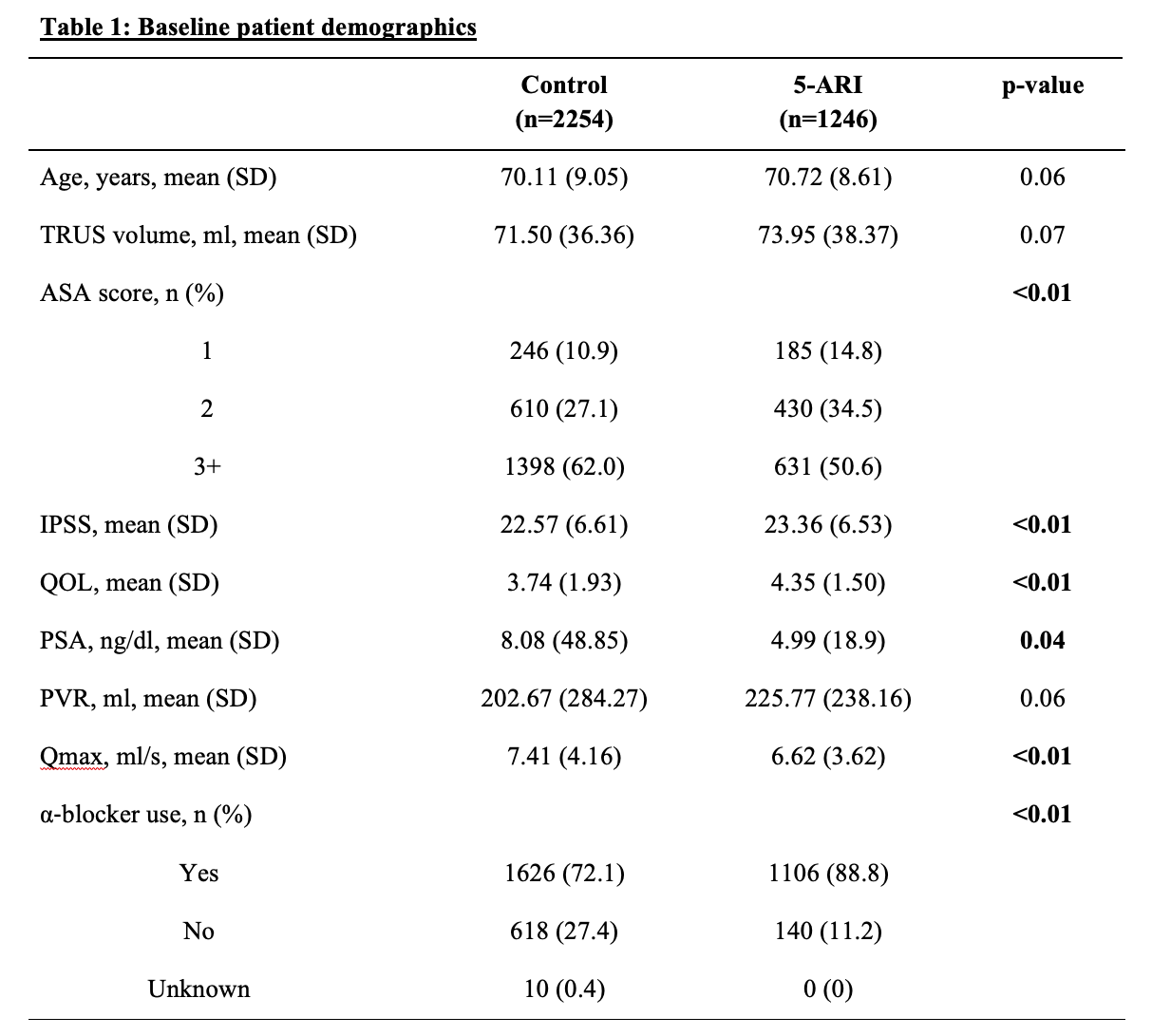Back
Poster, Podium & Video Sessions
MP04: Benign Prostatic Hyperplasia: Surgical Therapy & New Technology II
MP04-01: Impact of 5-Alpha Reductase Inhibitors on Functional Outcomes of Greenlight Photovaporization of the Prostate (PVP): An Analysis of 3500 Men in the Global Greenlight Group (GGG) Database
Friday, May 13, 2022
8:45 AM – 10:00 AM
Location: Room 228
Iman Sadri*, Ville Mont-Royal, Canada, David-Dan Nguyen, Kyle Law, Adel Arezki, David Bouhadana, Naeem Bhojani, Montreal, Canada, Dean Elterman, Toronto, Canada, Ahmed S. Zakaria, Thunder Bay, Canada, Franck Bruyère, Tours, France, Luca Cindolo, Giovanni Ferrari, Modena, Italy, Carlos Vasquez-Lastra, Mexico City, Mexico, Tiago Borelli-Bovo, Sao Paulo, Brazil, Edgardo F. Becher, Buenos Aires, Argentina, Hannes Cash, Maximillian Reimann, Berlin, Germany, Enrique Rijo, Barcelona, Spain, Vincent Misrai, Toulouse, France, Kevin C. Zorn, Montreal, Canada

Iman Sadri, MD
McGill University Faculty of Medicine
Poster Presenter(s)
Introduction: 5-alpha reductase inhibitors (5-ARI) are an effective medical therapy for patients experiencing lower urinary tract symptoms due to benign prostatic hypertrophy with large volume prostate glands. However, their mechanism of action can lead to alterations in various prostate tissue parameters. In this study, we sought to investigate the impact of 5-ARIs on the operative outcomes of 180W XPS GreenLight PVP using a large international database
Methods: Data was obtained from the Global GreenLight Group (GGG) database which includes 8 high-volume, experienced surgeons, from a total of 7 international centers. All men with established BPH with known 5-ARI status who underwent GreenLight PVP using the XPS-180W system between 2011 and 2019 were eligible for the study. 3500 men were identified. Patients were assigned to 2 groups based on the presence or absence of 5-ARI prior to surgery. Data was adjusted for patient age, prostate volume, and American Society of Anesthesia (ASA) score.
Results: Patients in both groups were similar with regards to age and prostate size. However, patients taking 5-ARIs had a significantly higher baseline IPSS and QOL scores in addition to a significantly lower preoperative Qmax and PSA levels. On univariate analysis, men taking 5-ARIs required shorter hospital stays (median of 1.00 days vs. 2.00 days, respectively, p<0.01), and lower risk of requiring a blood transfusion (rate of 0.79% vs 0.86%, respectively, p=0.04). Furthermore, there were no statistically significant changes in total operative time, laser time, or readmission rates. On multivariate analysis, total operative time was 3.26 minutes shorter (95% CI: 1.20 — 5.32, p<0.01) 35.6kJ less laser energy (95% CI: -48.0kJ — -23.3kJ, p<0.01) was required for patients on 5-ARI. However, no clinically significant difference was appreciated with regards to post-operative transfusion rates, readmission rates or overall functional outcomes.
Conclusions: Our findings suggest that preoperative 5-ARI decreases operative time and total laser energy required with minimal changes to postoperative outcomes for patients undergoing Greenlight PVP using the XPS-180W system.
Source of Funding: none

Methods: Data was obtained from the Global GreenLight Group (GGG) database which includes 8 high-volume, experienced surgeons, from a total of 7 international centers. All men with established BPH with known 5-ARI status who underwent GreenLight PVP using the XPS-180W system between 2011 and 2019 were eligible for the study. 3500 men were identified. Patients were assigned to 2 groups based on the presence or absence of 5-ARI prior to surgery. Data was adjusted for patient age, prostate volume, and American Society of Anesthesia (ASA) score.
Results: Patients in both groups were similar with regards to age and prostate size. However, patients taking 5-ARIs had a significantly higher baseline IPSS and QOL scores in addition to a significantly lower preoperative Qmax and PSA levels. On univariate analysis, men taking 5-ARIs required shorter hospital stays (median of 1.00 days vs. 2.00 days, respectively, p<0.01), and lower risk of requiring a blood transfusion (rate of 0.79% vs 0.86%, respectively, p=0.04). Furthermore, there were no statistically significant changes in total operative time, laser time, or readmission rates. On multivariate analysis, total operative time was 3.26 minutes shorter (95% CI: 1.20 — 5.32, p<0.01) 35.6kJ less laser energy (95% CI: -48.0kJ — -23.3kJ, p<0.01) was required for patients on 5-ARI. However, no clinically significant difference was appreciated with regards to post-operative transfusion rates, readmission rates or overall functional outcomes.
Conclusions: Our findings suggest that preoperative 5-ARI decreases operative time and total laser energy required with minimal changes to postoperative outcomes for patients undergoing Greenlight PVP using the XPS-180W system.
Source of Funding: none


.jpg)
.jpg)